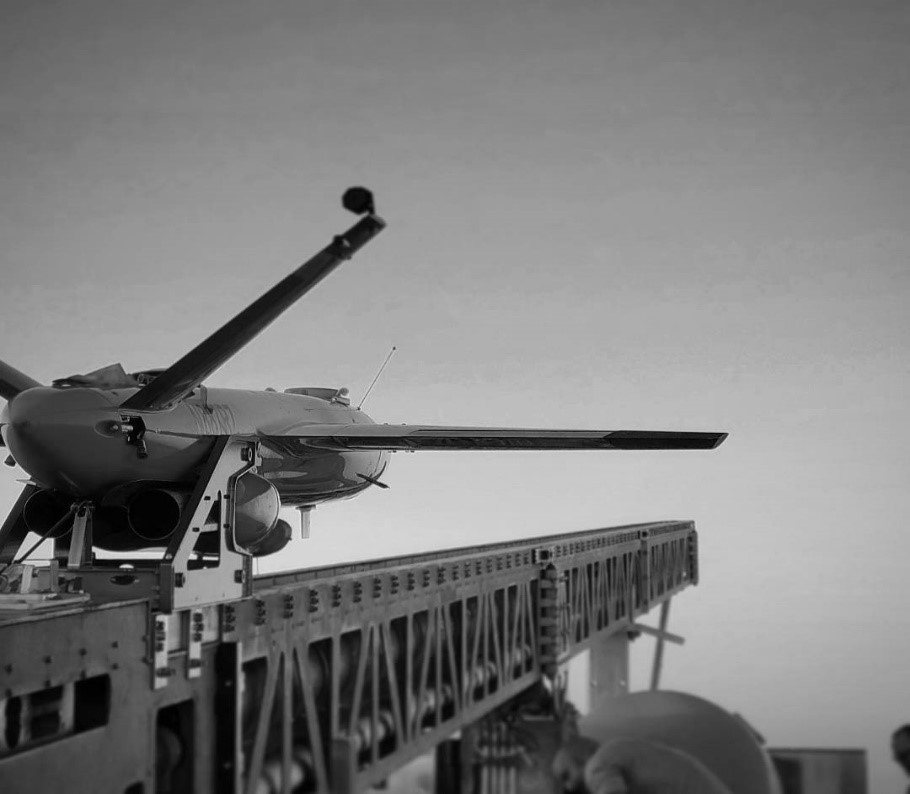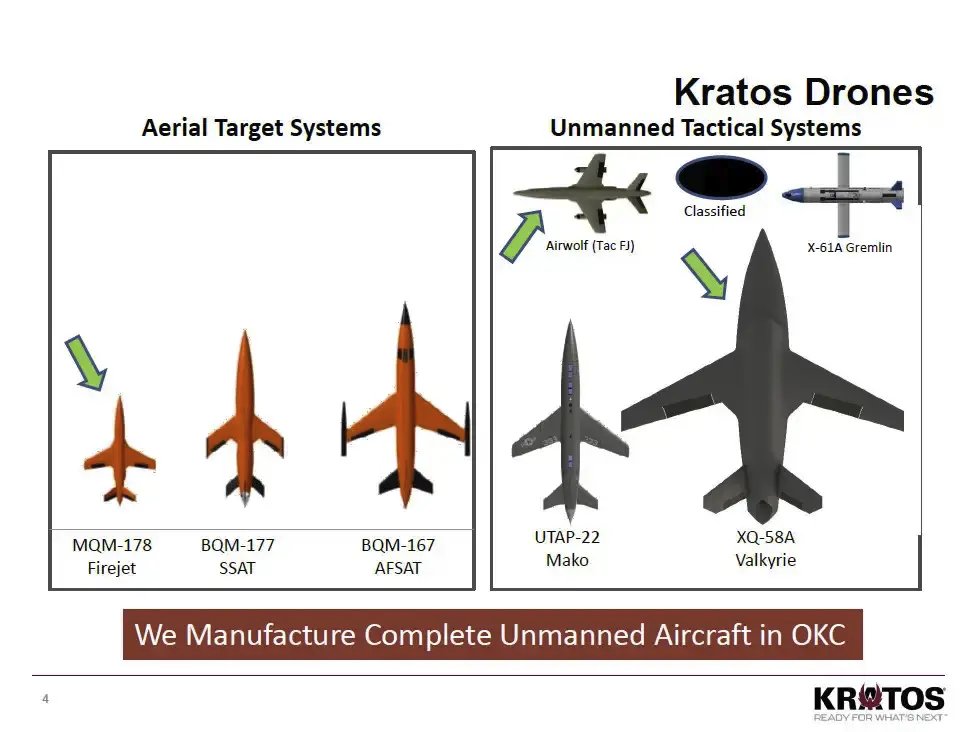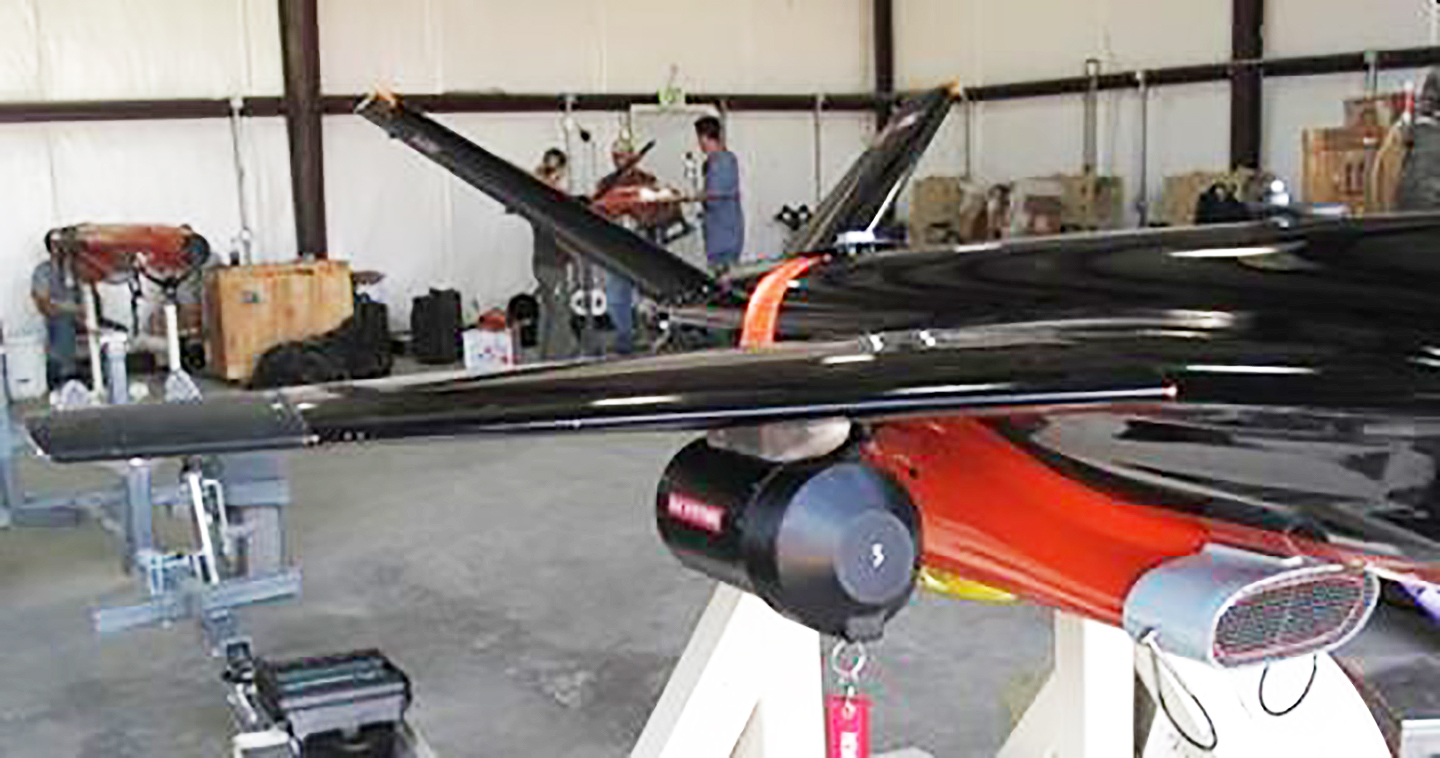Kratos Defense and Security Solutions, in a press release discussing their family of “Collaborative Combat Aircraft,” provided the first full-color photo of their Air Wolf Tactical Drone System earlier today.
Air Wolf, which was first revealed to the public by Kratos in August 2021, is based on the MQM-178 Firejet airborne target. Unveiled in mid-2007, the Firejet is Kratos’ smallest airborne target offering, compared to the BQM-177 Sub-Sonic Aerial Target (SSAT) and BQM-167 Subscale Aerial Target (AFSAT) targets. Unlike the BQM-177 and BQM-167 platforms, the Firejet does not require a rocket-assisted takeoff mechanism, only a pneumatic catapult. This allows it to be launched more easily from both land and sea-based platforms, requiring only a very small logistical footprint.
It is one of the smallest of the ‘loyal wingmen’ style drones that we know about being offered and its test target DNA means that it will likely be among the very cheapest, as well. This could prove highly attractive depending on how the Air Force and other air arms proceed with their manned-unmanned aerial teaming initiatives.

The new photo of Air Wolf provides a fresh angle of the aircraft, as well as a look at the paint scheme Kratos has chosen for the platform. It appears to retain the bright orange paint around the engine intake from the Firejet, and the rest of the aircraft is painted in a glossy black. This differs from the first photo Kratos released of the Air Wolf; that photo showed a much lighter paint scheme on the entire aircraft with black writing for the FAA registration.
In the first photo, Air Wolf was physically identical to the MQM-178 Firejet, except for the civilian registration towards the rear of the aircraft. Kratos Unmanned Systems Division President Steve Findley specifically noted to The War Zone that the “outer mold line,” or physical dimensions of the aircraft, are identical between the MQM-178 Firejet and Air Wolf, but the internals systems are quite different. In this new photo, the drone also appears to be carrying a new BAE Systems payload. This payload, referred to in the press release as a “Tactical Mission System,” does not match any currently known BAE Systems airborne payloads. The mystery payload appears to have an enlarged front end with a red “remove before flight” lanyard attached, suggesting that it could be a removable front cap protecting a lens or antenna, or perhaps an atmospheric sensor intake.

Very little has been released by Kratos regarding Air Wolf beyond two press releases, a few investor relations presentations, and information previously published by The War Zone.
Initially created by Composite Engineering Inc. prior to 2012, Air Wolf’s Firejet progenitor is designed to provide an effective training target for current generation aircraft and air defense systems. After Kratos acquired CEI in May 2012, the company began producing the Firejet through their new Unmanned Systems Division, which was made up of former CEI employees and infrastructure.
In 2018, Kratos opened a new manufacturing facility at Will Rogers Business Park in Oklahoma City, Oklahoma with the purpose of increasing production rates and offering more competitive pricing against other companies developing unmanned aerial vehicles. Soon after expanding their Oklahoma City facility in 2020, Kratos established a test flight center at the Oklahoma Air & Space Port just outside of Burns Flat, Oklahoma in 2021.
A slide from a 2020 investor presentation published by Kratos makes mention of the “Tactical Firejet” project being a partnership with AeroVironment, intending to launch a Switchblade suicide drone from a Firejet drone (more on that capability a minute). Later presentations mention Air Wolf and Tactical Firejet at the same time, suggesting that the two projects were either merged between 2020 and 2021 or were always just two different names for the same platform, which included the Switchblade capability. The first Air Wolf prototype, N887RZ, is marked in FAA paperwork as having been manufactured in 2019, indicating that this specific airframe has moved around and changed designation through several iterations of the Tactical Firejet / Air Wolf programs.
According to FAA documentation on the first Air Wolf prototype, the aircraft is restricted to flying within the Oklahoma Spaceport-controlled airspace. While the aircraft is capable of flying between 20 feet up to 35,000 feet, Kratos has established a restriction on Air Wolf flights, requiring it to stay between 10,000 feet and 16,000 feet. According to the same paperwork, as of August 25, 2021, the Air Wolf has flown a total of 83 hours. According to FAA records, another MQM-178 Firejet was given a civil registration of N501YM in March of this year. This aircraft has a similar serial number, which could suggest another Air Wolf prototype in development.
In September 2021, Kratos confirmed to The War Zone that the Air Wolf had successfully deployed Aerovironment’s Switchblade-series loitering munition, which are designed first to be launched from a pneumatic tube by an operator on the ground. Kratos Unmanned Systems Division President Steve Fendley also noted at that time that Kratos had been issued contracts to provide the Air Wolf drone to several unidentified customers.
The capability for Air Wolf to launch the Switchblade would offer an extended surveillance range to the platform, using the Switchblades to collect additional intelligence. The US Army has tested such a concept before at Project Convergence 2020, and created a concept video showing four air-launched small drones flying into enemy-controlled territory and providing a more detailed intelligence picture.

In the case of the Switchblades, they could also be used as kinetic weapons: fly out, positively identify and subsequently strike the target. Other possible uses include acting as decoys or even providing stand-in jamming support.
It was not specified which version of Switchblade was launched from the Air Wolf; the Switchblade 600 version has anti-armor capabilities, while the Switchblade 300 version is only effective against soft targets- and personnel.
As noted earlier, the Kratos press release mentions their family of Collaborative Combat Aircraft. This family includes the UTAP-22, XQ-58A, Air Wolf, and Gremlin unmanned tactical systems. Its version of the Off-Board Sensing Station and its shadowy ‘Demogorgon’ are also potentially part of this mix, as well as others that may remain undisclosed. Kratos is not alone when it comes to developing a loosely unified family of unmanned air combat systems that will be offered up to fulfill future air combat needs.

For the Air Force, CCA is a new black-budget program that feeds into a number of other programs such as Next Generation Air Dominance (NGAD), and has other existing programs feeding into it, like Skyborg. CCA was revealed by Secretary of the U.S. Air Force Frank Kendall earlier this month. The so-called manned-unmanned teaming (MUM-T) concept is emerging in several different flavors, from allowing a pilot to issue high-level commands, such as “loiter here,” or “follow me” or “attack that” to offering a much less command-dependent, supportive functionality leveraging high-degrees of artificial intelligence.
MUM-T began with the US Air Force “Have Raider” and “Have Raider II” programs in 2015, with a manned F-16D controlling a modified NF-16D that was re-designated as the X-62A. Since then, MUM-T has been tested several times by a number of manufacturers, with one of the earlier examples being Kratos’ own UTAP-22 drone. In 2015, the Kratos drone was able to successfully hand off control between a ground control station and a United States Marine Corps AV-8B Harrier in each of three test flights.

Later tests included versions of the UTAP-22, as well as General Atomics’ MQ-20 Avenger, to name a few. Boeing also began testing their MQ-28 Ghost Bat ‘loyal wingman’ drone in November 2021. Development in this area has very likely been ongoing, at least to a limited degree, in the deeply classified realm, as well.
As it sits, much of the Airwolf program remains obscured, but at least we are seeing a bit more of the aircraft in photos, as well as at least one of its potential payloads.
Contact the editor: Tyler@thedrive.com
